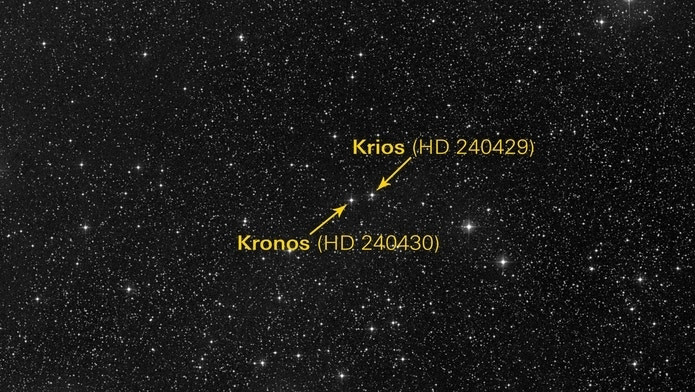Kronos: The planet-devouring star that has eaten the equivalent of 15 Earths
The star is the clearest and most dramatic case observed to date of a sun-like star consuming its own planets.

Some 350 light years away from Earth, astronomers have spotted an extraordinary sun-like star that has consumed 15 rocky planets in its own system.
"Even if our sun ate the entire inner solar system, it wouldn't come close to the anomaly we see in this star," said David Hogg from the Center for Computational Astrophysics (CCA) at the Flatiron Institute, who is co-author of the study describing the discovery.
The star, nicknamed Kronos after the child-eating Titan of Greek mythology, is the clearest and most dramatic case observed to date of a sun-like star consuming its own planets, said Semyeong Oh of Princeton University. Oh is lead author of the study, published on the website arXiv.org.
Oh says that future investigations into the greedy star's planetary system could provide new insights into how solar systems form and evolve.
Oh and Hogg collaborated with CCA director David Spergel, Adrian Price-Whelan from Princeton University and John Brewer and Justin Myles of Yale University.
The researchers did not set out to find a planet-eating star. In fact, Oh was analysing new data collected by the European Space Agency for pairs of stars with similar speed and trajectories. These binary stars typically formed close together from the same ingredients.
Oh then connected with Brewer, who was conducting analysis of the chemical composition of stars. When they compared their data, they identified two stars of interest: Kronos and Krios, which appeared in both of their datasets.
The data describing the star pair didn't make sense to the researchers at first, according to Oh. Usually, binary stars are near-identical twins. But Kronos and Krios had vastly different chemical makeups, including the largest difference in metal content of any binary star system yet studied.
Several potential explanations were put forward for this discrepancy. It was suggested that one star is older than the other, that the two stars formed from different gas clouds, or perhaps the parent gas cloud was not well mixed. However, based on the properties of the stars, the researchers thought these explanations were unlikely.
"We started discussing what could make two stars that must have been born together have such different chemistry now," Oh said
The idea that Kronos had consumed planets presented itself as the most credible idea based on the data, despite the fact that there was no direct evidence planets orbited the star.
There are significant compositional differences between Kronos and Krios for elements such as iron, silicon, magnesium and lithium – all of which make up the majority of rocky planets like Earth.
These elements were concentrated in Kronos' outer layers, suggesting to the researchers that the star probably consumed many planets' worth of rocky material a billion years or more after its formation. This significantly altered its composition in relation to its sibling Krios. The team's data suggested Kronos has devoured 15 Earth-sized masses.
Previous research has found evidence of planet-eating in other types of stars such as white dwarfs and even the Sun, but not to such an extreme.
The researchers propose that Kronos began eating planets after flying close to another star. The resulting gravitational interactions stretched the orbits of Kronos' outermost planets so that they ended up passing through the inner solar system. In turn, their gravity sent rocky inner planets crashing into the star.
Importantly, the study shines a light on how solar systems change over time. "We assume that once stars are born, their chemistries are fixed," Price-Whelan said. "This is yet more evidence of stars changing."





















